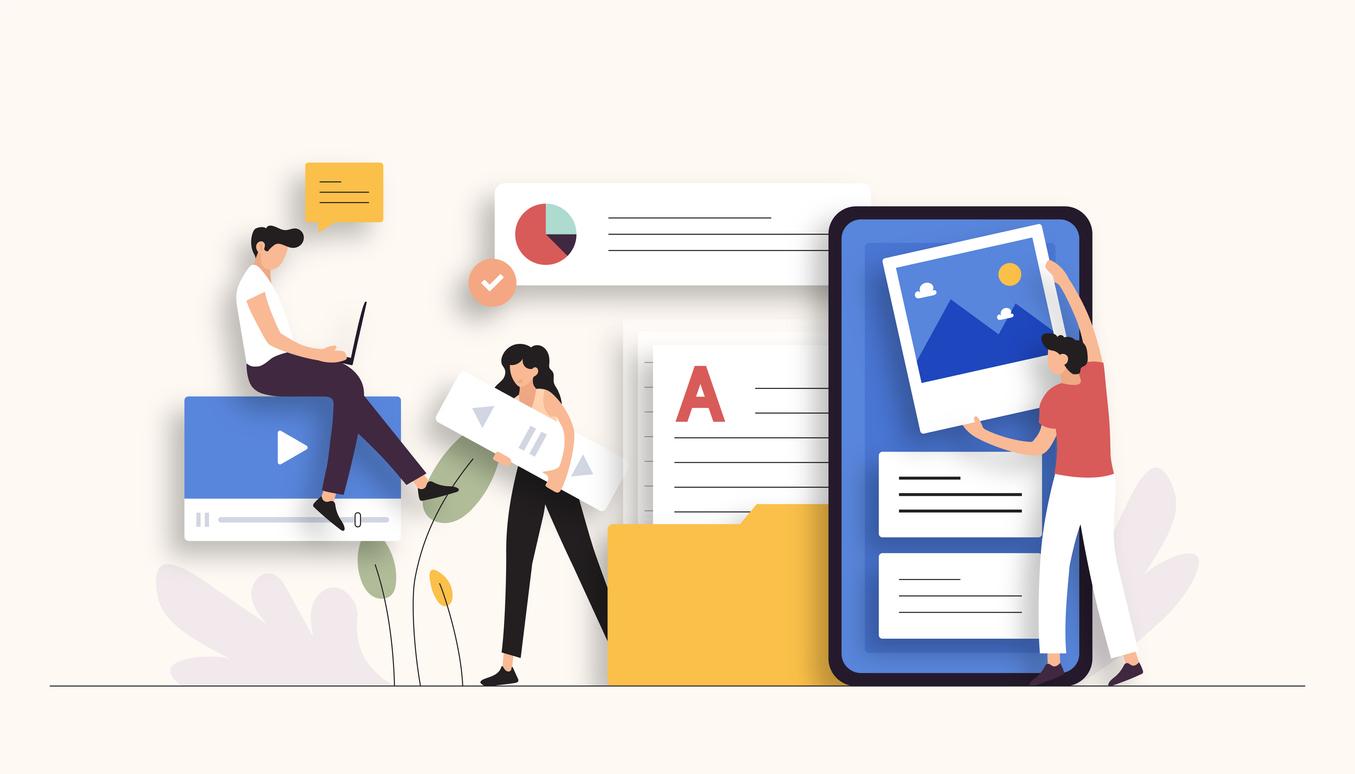But because getting the experience right for the user is an intricate process, various specialties are involved. The terms user interface (UI) and user experience (UX) are commonly used interchangeably, but it’s important to understand their differences, in order to appreciate how they compliment each other to create meaningful products.
There’s many reasons why these terms are used interchangeably, as they’re both related disciplines that work closely together. Both have a human-centric approach, but they have different focuses, applications, and provide different results.
On the surface, UI focuses on the interactions of each element within a product - the features of a car, for example - while UX focuses on all interactions and experiences beyond a product - the feeling you get when driving the car. But it’s much more than this.
Today, we’re discussing the key differences between these disciplines, and how they’re combined to create meaningful products.
The interaction between human and machine: user interface design
The placement of a button on your app is not a random choice.
User interface design considers the look, feel and interactivity of a product, ensuring that every touchpoint is fit for purpose - every individual component that the user touches is carefully considered to give them a seamless experience. The design considerations at a UI level would include:
Typography - choosing the right font style and size.
Colours - ensuring colours support clear indications while also staying consistent with the brand.
Positioning - putting components in the right place.
Flow/movement - various animations and movement styles to bring the product to life.
These are things the digital user comes across everyday - if you’re online shopping, you’ll experience the UI design through a strongly displayed product title, an appealing product image, clear toggle options (for products of different colours or styles), the placement of the price, and a clear button to add it to your basket.
But as we’ve mentioned, these design choices aren’t random. Great design doesn’t just happen. It takes research, analysis, and conceptualisation to make it meaningful to the user - that’s where UX design comes in.

The bigger picture: user experience design
“User experience encompasses all aspects of the end-user’s interaction with the company, its services, and its products.”
- Don Norman, Cognitive Scientist & User Experience Architect
Like the name suggests, UX design encompasses the end-to-end experience that the user will have when interacting with the product. And as we’ve said before, a meaningful experience can’t happen without understanding the user you’re creating the experience for.
That’s where UX starts: research. Our UX designers do this by interviewing key stakeholders involved in the product-building process, including businesses and customers. Doing this extensive research can help answer questions like:
What problem should the product solve?
What are the customer’s expectations of the product?
Where can this product be found?
As the answers to these questions become apparent, UX designers can then go on to creating user personas, helping to visualise the goals, desires and limitations of target users, and also start to map out the the concept of the user journey, focusing on the emotions the user will experience when interacting with a product at varying levels.
This then informs the information architecture - a structure that brings together the information gathered on the users, context and content and organises it in an effective way. This is where each individual page can start being laid out, which includes decisions on user interface aspects like component placements and navigation flows.
That’s why UX and UI make such a great team - UX seeks to understand the user, and create the best experience based on that understanding, while UI seeks to design touchpoints that support this experience at a more granular level.

Better together
It’s best to think about user experience as a life cycle.
The user interface can only begin when the user is actively engaging with the product, but the experience starts long before that - users must first become aware of the product and go through an onboarding process before they start actively using it, and will even go on to experience support touchpoints and an offboarding journey after this. UX design takes these stages of the lifecycle into consideration, before and after the UI design comes into play.
As such, UI design can be described as a subset of UX design that is introduced once the research has been done, and there’s a clear understanding of the user, and what the product needs to achieve.
While separate processes and responsibilities, you can’t have one without the other. A strong user interface means very little if it doesn’t follow the desired journey for the user, and the overall user experience won’t be effective if the components don’t support its purpose. That’s why they both have to understand the vision, and work so closely together throughout the product build.
In short, a great experience starts with UX and is followed by UI, and both are essential to the success of a product.
Our design team provides expertise in both UX and UI design to some of the UK’s most recognisable brands. Get in touch to find out how we can help you build the best product for your user.

